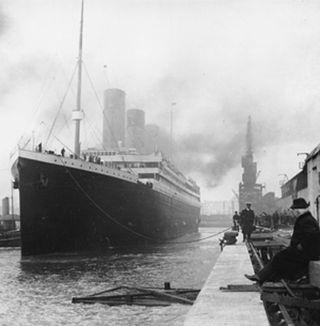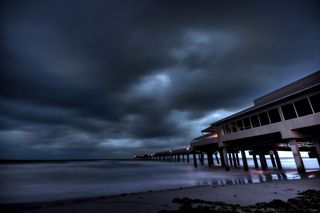
Icebergs, Menace of the Sea 101 Years After Titanic

This article was provided by AccuWeather.com.
The threat of icebergs still exists 101 years after the RMS Titanic sank to the bottom of North Atlantic Ocean on April 15, 1912.
One reason icebergs may still be a danger to ships is due to the size of the iceberg.
Although an iceberg may seem to be small floating on the surface of the ocean, the majority of the iceberg is under water. Almost 90 percent of an iceberg is under water, according to newfoundlandlabrdor.com.
A certain time of year could also prove to be dangerous for sailors in the trans-Atlantic shipping lanes. Icebergs start to break off of ice shelves usually around April and into May. During the months of May and June icebergs can usually be seen below 48 degrees North latitude.
AccuWeather.com Meteorologist Brett Anderson said that icebergs tend to break off as soon as the melt season begins.
Another reason why icebergs could still be hazardous to ships is due to how in the winter months ships can't travel that far north, but as the melt season begins, it gives ships access to northern waters, which may be home to icebergs, according to Anderson.
Sign up for the Live Science daily newsletter now
Get the world’s most fascinating discoveries delivered straight to your inbox.
In 1914 only a few years after the sinking of the RMS Titanic, The International Ice Patrol was created to help monitor and warn vessels of potential danger.
"Our job is to monitor the iceberg danger near the Grand Banks of Newfoundland and provide the iceberg limit to the maritime community," Chief Scientist at the International Ice Patrol Michael Hicks said.
Other ways icebergs are detected are by radar and sonar. Sonar picks up sound waves from underwater objects, such as icebergs. According to britannica.com, icebergs make a popping and cracking sound underwater and a high pitched hissing sound in the summer due to the deposit of bubbles from the ice.
The potential increase in icebergs and correlation between icebergs and climate change is something that has been debated, but not proven.
"We see variability in the count of icebergs that are delivered to the shipping lanes every year," Hicks said.
However, Hick also said that the Greenland glaciers, where iceberg production occurs, is moving faster and thinning.
"The number of icebergs we see that affect trans-Atlantic shipping has much more to do with complex oceanographic and meteorological processes that affect the iceberg delivery system than on the impact of climate change," Hicks said.
In order for icebergs to be a hazard to shipping vessels in the trans-Atlantic shipping lanes, the icebergs have to get to the shipping lane.
Dr. Richard Alley, a professor in the GeoSciences department at the Pennsylvania State University said that periods of warming have a lot to do with how quickly icebergs get to the lanes.
"The bergs have to get to where the ships are, and that depends on how fast and which way the winds blow and currents flow, and how warm the air and water are to melt the bergs on their way," he said.
Although the role that climate change plays in iceberg production is still uncertain, icebergs remain a threat to vessels today.
© AccuWeather.com. All rights reserved. More from AccuWeather.com.
With much of the country experiencing an unseasonably warm winter, fears of climate change come to mind. See how well you understand recent weather, climate and the difference between them.
Weather vs. Climate Change: Test Yourself

Most Popular

